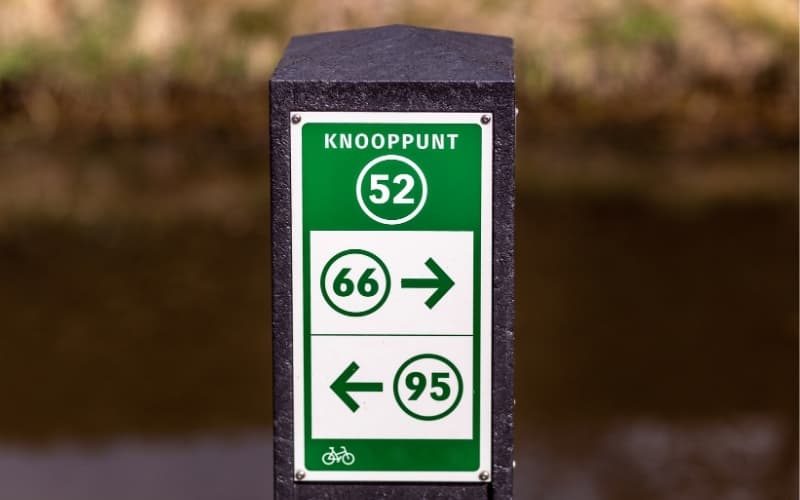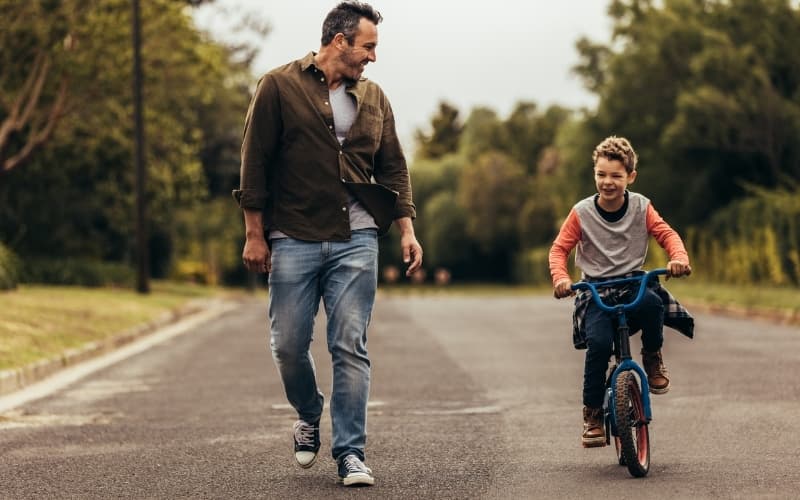

When you visit the Netherlands, chances are you will see more bikes than actual people. Almost everyone uses bikes as their preferred form of transportation. I cannot imagine my life without bikes. I used to cycle to school every day, alongside some of my friends who lived nearby. Cycling has always been something ordinary for me, something that’s a given. When I realized that cycling isn’t as popular in other countries, I started to ask myself the following question "why is cycling so popular in the Netherlands?".
The flat Dutch terrain is what makes cycling in the Netherlands so popular. The infrastructure in the Netherlands is built around cyclists. There are many bicycle lanes, making it a safe means of transportation. In large cities, cycling is also easier and faster than driving a car.
But cycling is not merely done for convenience. There are plenty of other reasons to use a bike other than just to get from one place to the other, such as for fun. Below you can find several examples of activities the Dutch use their bike for.
Cycling is very common in the Netherlands. On average, Dutch people cycle about 900km (about 559 miles) a year. Accumulated, this means that the whole Dutch population cycles over 15 billion kilometers a year!
Oftentimes it does not matter whether it’s a sunny day or raining. Dutch people love to take their bikes when they have to go somewhere. We take our bikes when we go out to dance, when we want to hit the gym or when we are going to visit a family member. Cycling to school and work are the most common.
Dutch people never have to worry about not having a bike nearby, because in the Netherlands there are approximately 1,3 bikes per inhabitant. This means there are more bikes than people in the country.
Bike lanes are a big contributor to the popularity of cycling in the Netherlands. They make it safer to cycle alongside cars. Safety is indeed the reason why there are so many bike lanes, this dates back to the seventies.
In the seventies, biking wasn’t as big yet as it is nowadays. The majority of people preferred to take their cars, which unfortunately lead to a lot of accidents. Both children and adults lost their lives when colliding with a car.
Protesters started to demand more space for cycling in order to make it safe. They got heard, which lead to over 35.000km (21.748 miles) of bike lanes throughout the whole country. Combine that with the fact there are barely any hills in the Netherlands, which means that it doesn’t have to be a whole workout to get somewhere.
Cycling grew to be a fairly inexpensive, safe, and easy way to move around. This is why in the Netherlands you cannot leave the house without seeing some cyclists.

The Netherlands is one of the safest countries in the world for riding a bike, with only 3.8 road deaths per 100.000 inhabitants.
In comparison, the United States of America has 12.4 road deaths per 100.000 inhabitants, which is more than three times the Dutch deaths. This is partly because of the infrastructure.
Unlike American infrastructure, in the Netherlands roads are adapted in a way that keeps cyclists and car drivers separated from each other as much as possible. There are many bike lanes to prevent accidents.
The bike lanes you will find just about anywhere, from the big cities to the more rural parts of the country. Those bike lanes are often made wide enough for cyclists to safely pass each other.
In the more populated areas, the bike lanes often have their own traffic lights, roundabouts, and tunnels. Due to the clear rules and separation from cars, the chances of dangerous accidents are slim.
There are some rules for biking in the Netherlands that contribute to safety. For example, Dutch law states that you are prohibited from using your phone while biking.
This contributes to the safety of yourself and others, as a phone can be very distracting. Another rule is that bikes are obligated to have working lights during the night, on both the front and the back.
As you can see, the Netherlands is doing a lot to make cycling as safe as possible. It will surprise you when I tell you that wearing a bicycle helmet is not mandatory in the Netherlands, unlike in many other countries.
Although it will be very strange for many Dutch people to suddenly have to wear a bicycle helmet, it would probably make cycling even safer than it already is.
Just like cycling to and from work, cycling as a sport has some fans in the Netherlands as well. About 5 to 6 percent of the Dutch population practices the sport, going out for a ride at least twelve times a year. They do this either with friends or family, but some also join a club.
When it comes to professionals, the Netherlands doesn’t stay behind either. We even have a few big names who have won important competitions in the cycling sport.
Old legends like Joop Zoetemelk, Jan Raas en Leontien van Moorsel are all Dutch, but the generation after that didn’t do bad either. Tom Dumoulin was the first Dutch person to win the Giro d’Italia in 2017 and Annemiek van Vleuten became the world champion in time trials a little over 2 years ago.
It is perfectly possible for tourists to cycle in the Netherlands. Especially in the bigger cities, it shouldn’t be hard to rent a bicycle.
In fact, I would recommend renting a bicycle while visiting the Netherlands because it gets you to places in a quick and safe manner. If you have never ridden a bicycle before, it might be a good idea to practice on a more silent road first.
It is also important to note that when having rented a bike, you should not forget the lock. If you are going to make it a quick stop and abandon your bike, it is very important to make sure it doesn’t get stolen. Unfortunately, the rate of stolen bikes in the Netherlands is quite high.
While you can use a bike simply as a means of travel, they can also be ridden for fun. There are a lot of predetermined cycling routes in the Netherlands.
There are some long routes, which I wouldn’t recommend to starting cyclists. Luckily there are also some junction routes, marked by specific signs.

If you want to cycle whilst seeing some typical Dutch scenery, a themed route might be the best option. The themed routes have hexagonal signs. An example of a themed route is the windmill route, which leads cyclists to see a number of beautiful Dutch windmills.
This is why cycling is one of the best ways to travel in the Netherlands for tourists.
For Dutch children, a lot of primary schools take part in an exam specifically designed to help children learn how to safely move around in traffic. This exam consists of a theoretical part and a practical part.
Before children are allowed to partake in the exam, they have to prove their biking skills are sufficient. A small track is set up so the instructor can see if they are eligible for the exam.
Most children are taught how to ride a bicycle at a very young age, by their parents or grandparents. They start with training wheels. When the child has gotten familiar with the bike, the training wheels come off. They then practice a lot in a safe environment that is fairly free of other traffic, until they don’t tip over anymore.
The theoretical part of the exam is mainly about the general rules in traffic, but it also dives into the lesser-known or even illegal situations. Children have to know what they are supposed to do in many situations that happen in everyday life. They get taught to be mindful of other people breaking the rules or making a mistake, while also learning how to stay safe themselves.
The practical part of the exam is done in a normal situation, just like driving tests. The children take a specific route on their bikes, showing the instructor they know how to do this safely. During the route, they will pass six posts where they have to show a particular skill. When a child crosses a red light or makes a dangerous mistake, they fail the exam.

Hopefully, this blog has answered all of your questions regarding the popularity of cycling in the Netherlands. The unique infrastructure based around cyclists is one of the main reasons Dutch people can safely take their bikes to work. Besides, the Netherlands is very flat, which makes it very easy to cycle. Cycling is a fun activity and is definitely something you should do when you want to fully emerge in the Dutch culture.